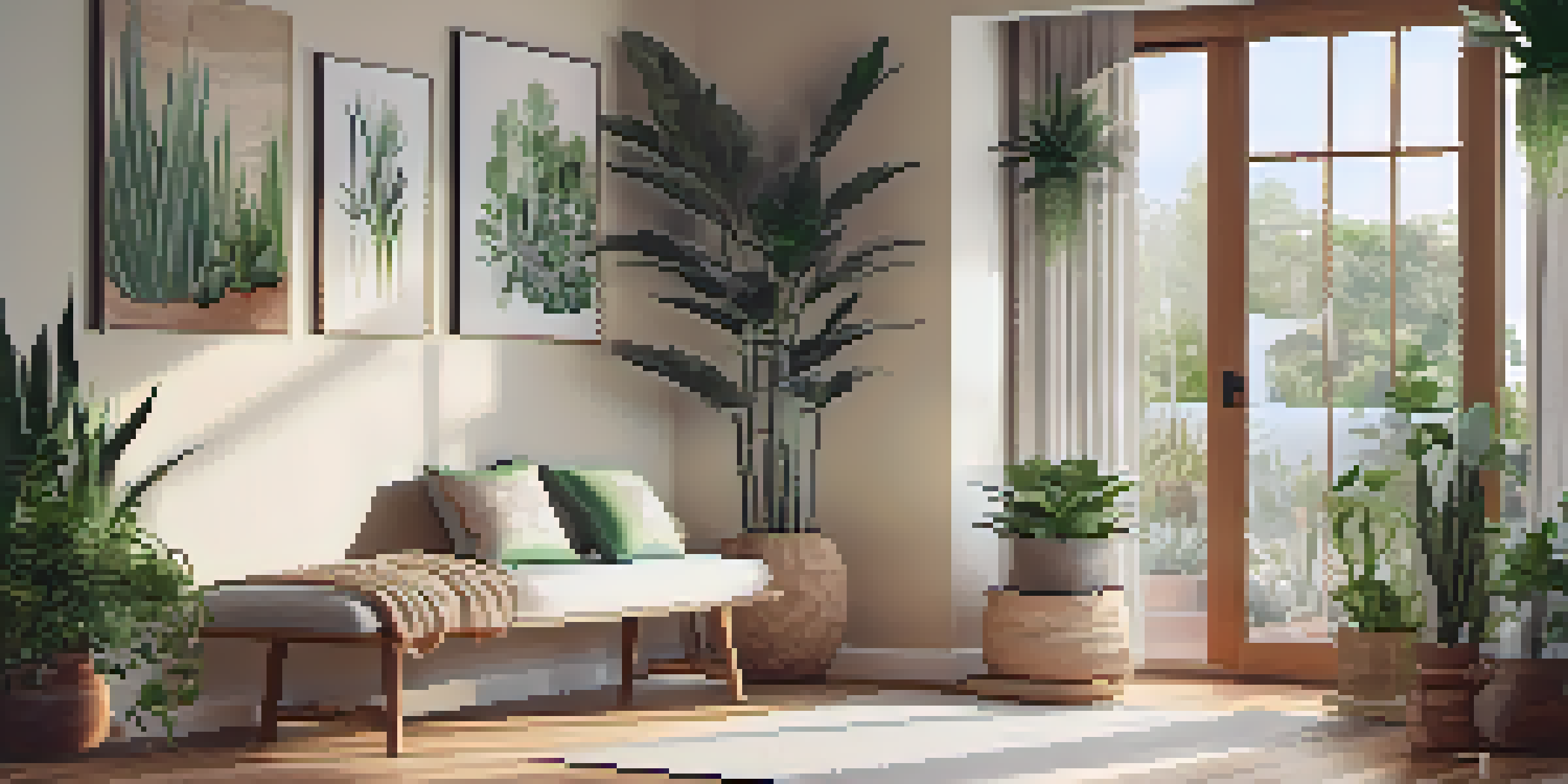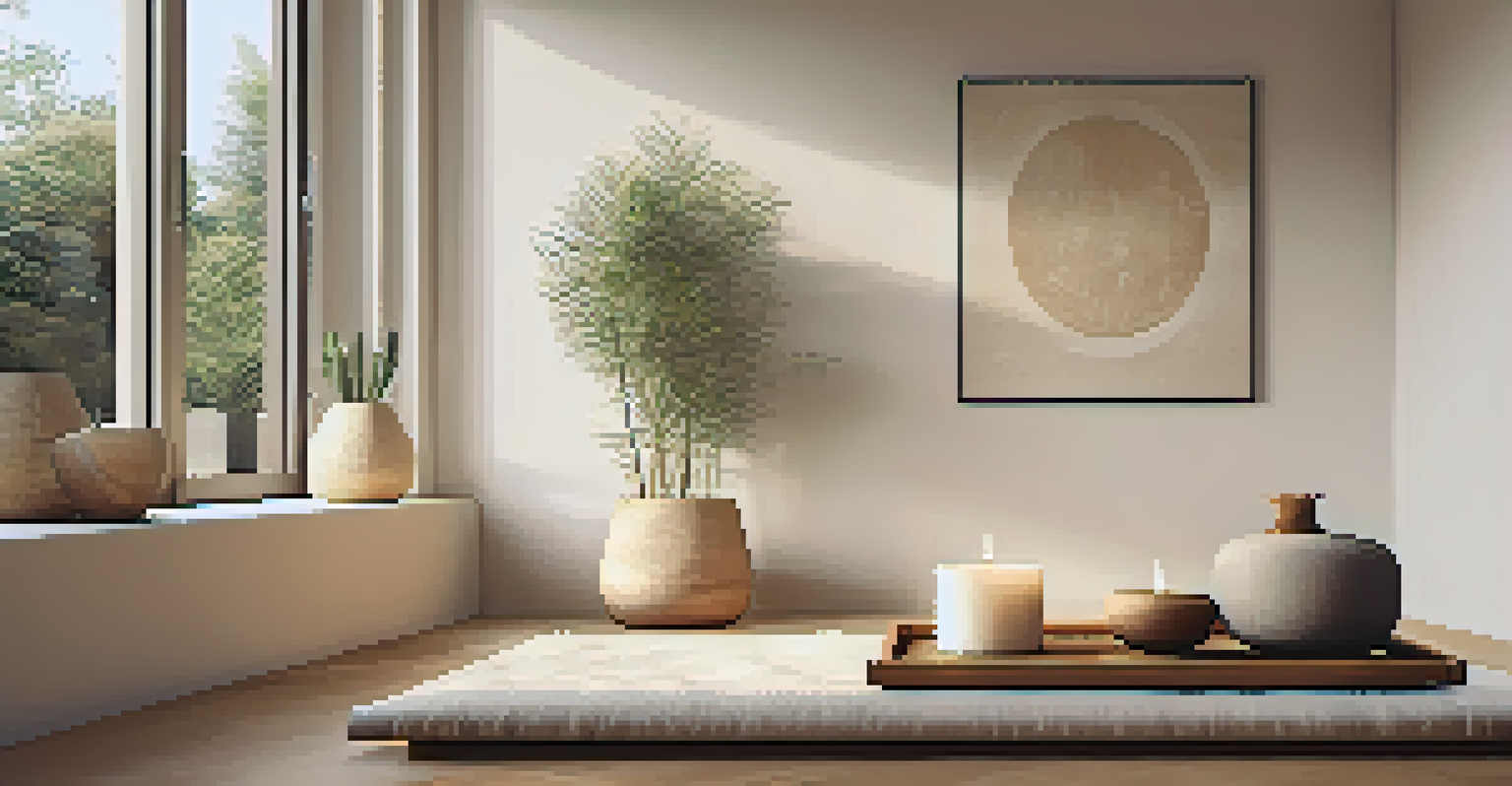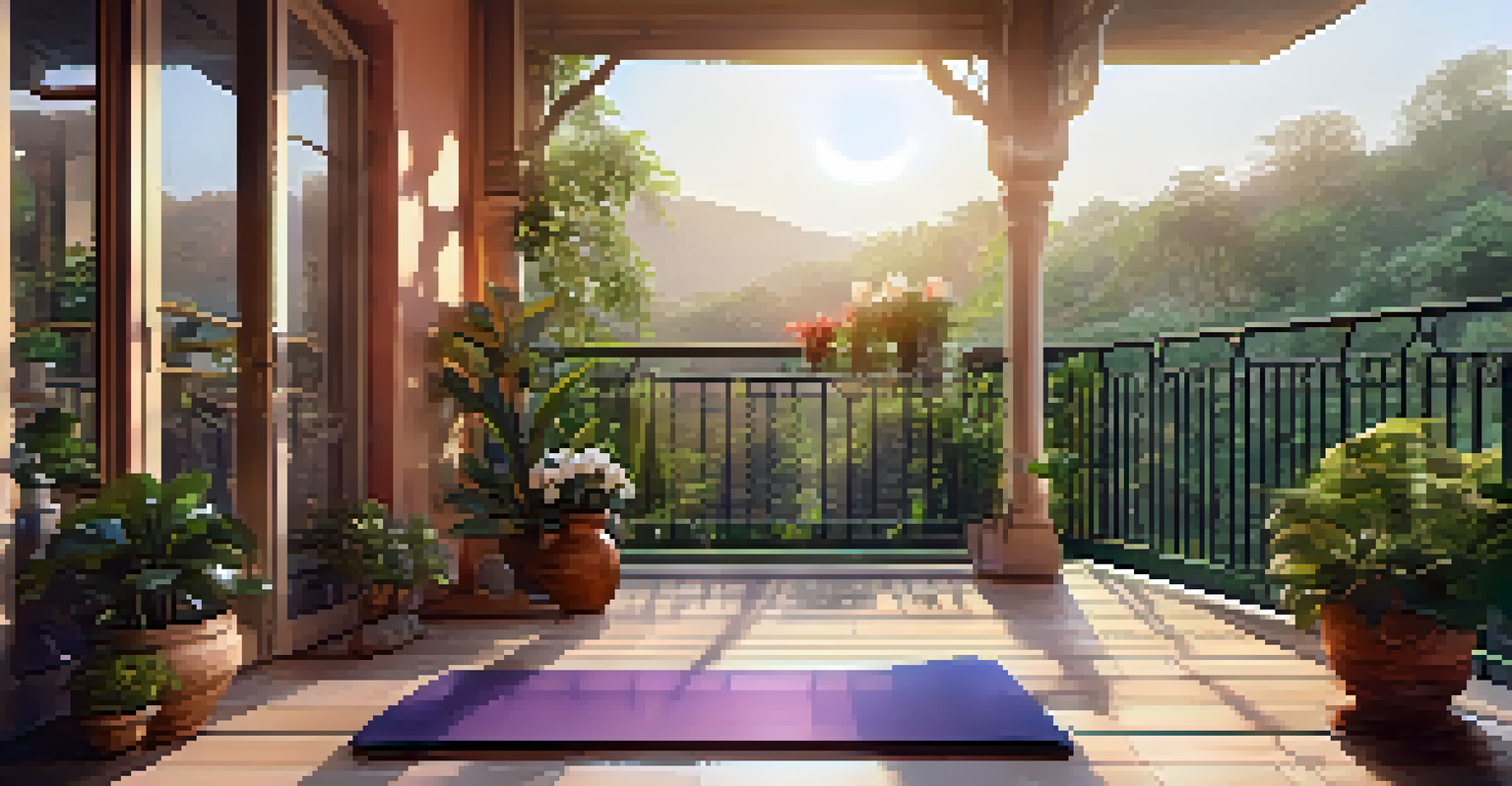Building a Yoga Sanctuary at Home for Stress Relief

Understanding the Importance of a Yoga Sanctuary
A yoga sanctuary at home serves as a personal retreat where you can escape the chaos of everyday life. By creating this serene space, you invite tranquility into your daily routine, making it easier to unwind and reconnect with yourself. Just like a cozy reading nook, your yoga sanctuary should be a place where you feel safe and comfortable, allowing you to fully engage in your practice.
Yoga is not about touching your toes, it’s about what you learn on the way down.
This sanctuary isn’t just about yoga; it's about building a holistic environment that promotes overall well-being. When you step into your sanctuary, it should evoke feelings of calm and focus, setting the tone for relaxation and mindfulness. Think of it as a sanctuary for your mind, much like how a garden nurtures plants to flourish.
By dedicating a space for yoga and meditation, you reinforce the idea that self-care is a priority. This commitment to nurturing your mental and physical health can significantly reduce stress levels, making it easier to navigate life’s challenges with grace and ease.
Choosing the Right Space for Your Sanctuary
Finding the perfect spot in your home to create a yoga sanctuary is essential. Look for a quiet corner that receives natural light, as it can instantly uplift the mood of your space. Whether it’s a spare room, a balcony, or even a cozy nook in your living room, the location should be one where you can retreat without distractions.

Consider the size of your chosen area. It doesn’t need to be large; even a small space can be transformed into a peaceful sanctuary. The key is to make it feel open and inviting—think of it as carving out a little oasis amid your daily hustle and bustle.
Create Your Personal Yoga Retreat
A home yoga sanctuary offers a tranquil space for relaxation and self-care amidst daily chaos.
Once you’ve identified the space, visualize how you want to use it. Do you prefer a minimalist approach with just a mat and some cushions, or do you want to add decor that inspires you? This is your sanctuary, so let your personality shine through in the design choices you make.
Incorporating Natural Elements into Your Design
Integrating natural elements can enhance the calming atmosphere of your yoga sanctuary. Plants, for instance, not only purify the air but also bring a sense of life and vibrancy to your space. Consider low-maintenance options like succulents or snake plants that thrive indoors and require minimal care.
The mind is everything. What you think you become.
Another way to incorporate nature is through natural materials such as wood, bamboo, or stone. These materials can ground your space, creating a warm and inviting environment that resonates with tranquility. A wooden yoga block or a bamboo mat can subtly remind you of the natural world while you practice.
Don’t forget about the role of light. Natural light can uplift your mood, so maximize it by using sheer curtains or blinds that filter sunlight. If natural light is limited, consider soft, warm lighting options, like salt lamps or fairy lights, to create a soothing ambiance during your sessions.
Selecting the Right Yoga Equipment
Choosing the right yoga equipment is vital for ensuring a comfortable practice in your sanctuary. Start with a good quality yoga mat that provides support and grip. This mat will be your foundation, so pick one that feels right underfoot and suits your style—whether it’s thick for comfort or thinner for stability.
Additional props, like blocks, straps, and bolsters, can enhance your practice by offering support and assisting in various poses. These tools are especially useful if you're just starting or want to deepen your practice. Think of them as your yoga allies, helping you achieve better alignment and relaxation.
Incorporate Natural Elements
Using plants and natural materials can enhance the calming atmosphere of your yoga sanctuary.
Finally, consider adding personal touches like scented candles or essential oils to enhance your experience. Scents like lavender or eucalyptus can help create a calming atmosphere, making your practice even more enjoyable. It’s all about crafting an environment that feels tailored to your needs.
Creating a Calming Atmosphere with Decor
Decor plays a crucial role in setting the mood for your yoga sanctuary. Simple decor items, like wall art or mandalas, can inspire mindfulness and positivity. Choose pieces that resonate with you—maybe a quote that reminds you to breathe deeply or a painting that showcases the beauty of nature.
Soft textiles, such as cushions and blankets, can add warmth and comfort to your space. These can be used during your practice or to create a cozy spot for meditation. Think of these textiles as your comfort zone, inviting you to relax and stay awhile.
Additionally, consider using calming colors in your decor, like soft blues, greens, or earth tones. These hues can evoke feelings of peace and serenity, helping to quiet the mind as you prepare for your yoga sessions. The right colors can transform your space into a peaceful haven.
Establishing a Routine for Your Practice
Once your sanctuary is set up, establishing a routine is key to making the most of it. Try to schedule regular times for your practice, treating them as sacred appointments with yourself. This consistency can help you build a habit, making it easier to integrate yoga into your daily life.
Start small, perhaps with just 10 to 15 minutes a day, and gradually increase your practice time as you become more comfortable. Think of this time as a gift to yourself—an opportunity to reconnect with your body and mind amidst the busyness of life.
Establish a Consistent Routine
Scheduling regular practice times helps build a habit and reinforces the importance of self-care.
Remember that it’s okay to have off days. The goal is progress, not perfection. Even on days when you can’t fully engage, simply stepping into your sanctuary can remind you to breathe and reset, reinforcing the importance of self-care in your routine.
Embracing Mindfulness in Your Practice
Mindfulness is a core aspect of yoga that can significantly enhance your stress relief efforts. As you practice, focus on your breath and the sensations in your body, tuning into the present moment. This awareness can help you let go of distractions and worries, allowing you to fully immerse yourself in your practice.
Incorporating mindfulness doesn’t just apply to your yoga sessions; it can extend to your everyday life. Try to carry this sense of presence with you as you go about your day. Simple acts, like drinking tea or taking a walk, can become opportunities for mindfulness if you approach them with intention.

As you cultivate mindfulness in your sanctuary, you may find it easier to handle stress outside of your yoga practice. The skills you develop on the mat—like focus, patience, and self-compassion—can translate into better coping strategies in your daily routines.